


Rodents are one of the most common pest control problems in Texas. There
are at least 64 species of native rodents in Texas in different families and mice
and rats fall into the "Muridae family".
Mice and rats reproduce rapidly and can be found not only in our homes, but
supermarkets, restaurants, warehouses, food processing facilities, livestock
facilities, and farm fields. In general, rats are significantly bigger than mice and
tend to be more destructive.
They become a big nuisance when they invade our homes and places of
business as they can chew and gnaw into our food sources as well as cause
damage by chewing and gnawing on walls, electrical wires, pvc pipe, even
metal pipe and other materials.
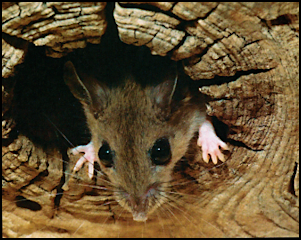
Not only do they "gnaw", chew and eat, but they also contaminat areas of our homes with their feces, urine, or fur. Their droppings
also contain infectious agents and these can be spread around the house by air movement from heaters or air conditioning units.
Rats and mice can spread disease to both humans and household pets and are just NOT WELCOME in our homes. Plain and
Simple!
Removing these pests from your property is a necessity and can be performed by using a professional extermination company
with the know-how to eliminate the problem from inside the home and outside as well. Southwestern A-1 Pest Control can help
homeowners control rodent populations in and around their property by assessing and determining the extent of infestation and
creating a plan of eradication.
Set up an appointment today with one of our professional exterminators who can safely rid the home of these annoying and even
dangerous pests.
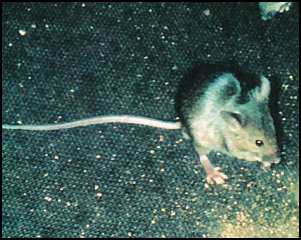
House Mouse
The house mouse is a small rodent characteristically having a pointed snout, medium
sized rounded ears, small beady eyes and a long bald tail. It is one of the most
common and widespread rodents found in our homes due to them having a higher
population rate than that of rats. The female can have 5 to 10 litters per year
consisting of 3 to 14 young per litter.
The House Mouse is usually light gray to dark gray in color, but can be light to dark
brown. They prefer to feed on cereal grains, or sweets but will eat almost anything.
Mice do not need much water usually getting their water requirements from their food.
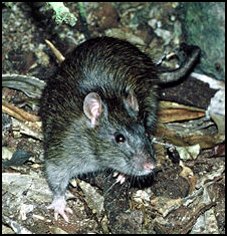
Norway rat
The Norway Rat is a medium sized stocky, chunky bodied rat with small hairy, sturdy ears.
They have small eyes and a blunt snout. Unlike the Roof Rat, their tail is shorter than there
body. They are usually a dark brown to black in color with a furry body.
The Norway rat is sometimes called a "brown rat" or a "sewer rat".
Norway rats tend to be larger and more aggressive to animals, humans and each other
than Roof rats.
Norway rats eat a wide variety of foods but mostly prefer cereal grains, meats, fish, nuts,
and some fruits.
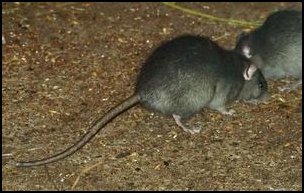
Roof Rat
The Roof Rat is a medium sized, slender rodent with large flimbsy ears and a long
scaley tail which is usually longer than their head and body combined. They have a
pointed nose and either a dark brown or black furry body. They are sometimes
called a "Black Rat".
Roof Rats are nocturnal creatures roaming most often between midnight and 4
am.
Roof Rats are excellent climbers and get their name because they usually live high off the ground, like on the roof of a building.
They make their homes in attics, ceilings and rafters of homes, sheds and garages. However, they may also live in boxes, under
floors, in wood heaps and in thick grass.
A female can have up to 3 litters a year with 4 to 8 pups per litter.
They have very poor vision and are color blind, but they have extremely strong senses of hearing, smell, touch and taste. Roof
Rats will eat just about anything including fruits, berries, vegetables, cereal, pet food, nuts, grain, slugs, snails and rotten food.
When Norway rats invade buildings, they usually remain in the basement or ground floor. They also live in fields, farms,
woodpiles and buildings. Their nests are usually lined with shredded paper or cloth.
The Norway Rat is nocturnal and cautious, they do not travel far from their nest. Norway rats have poor agility and sight but
their other senses are excellent. They are good swimmers.
Adults females usually have 3 - 6 litters, with an average of 7 - 8 young per litter.

RODENTS (RATS & MICE)
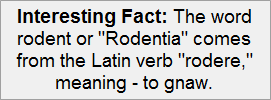
LEARNING CENTER




